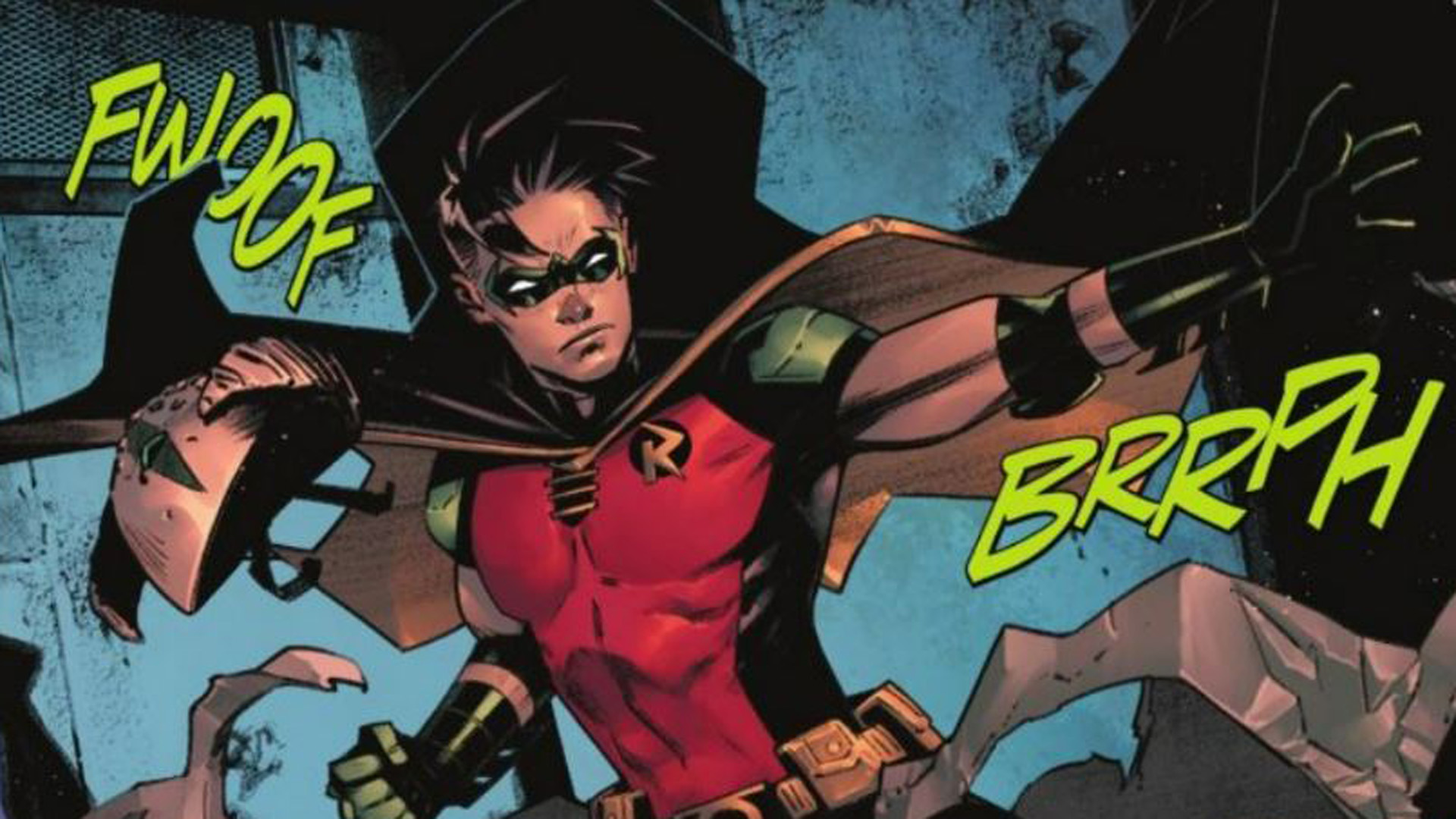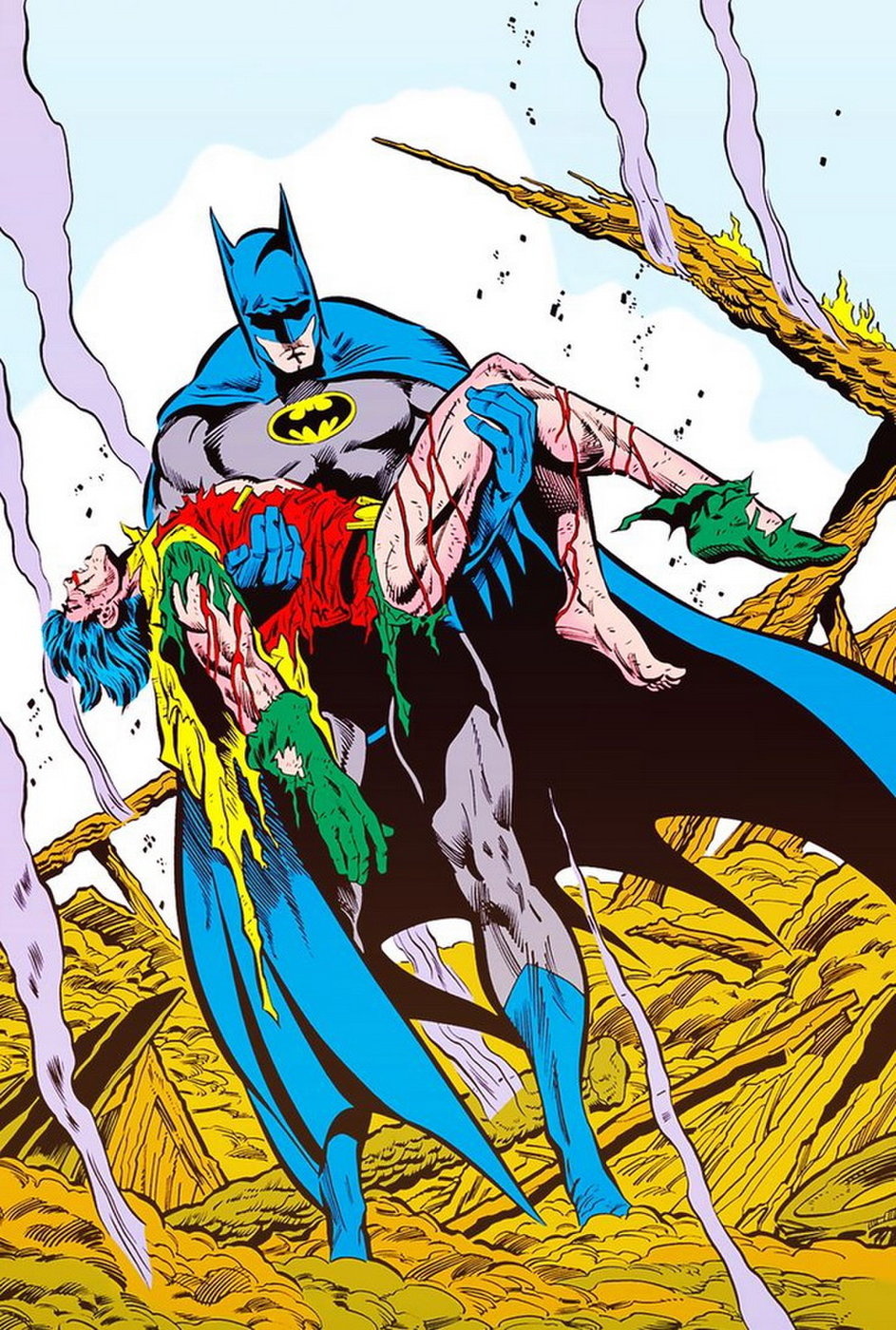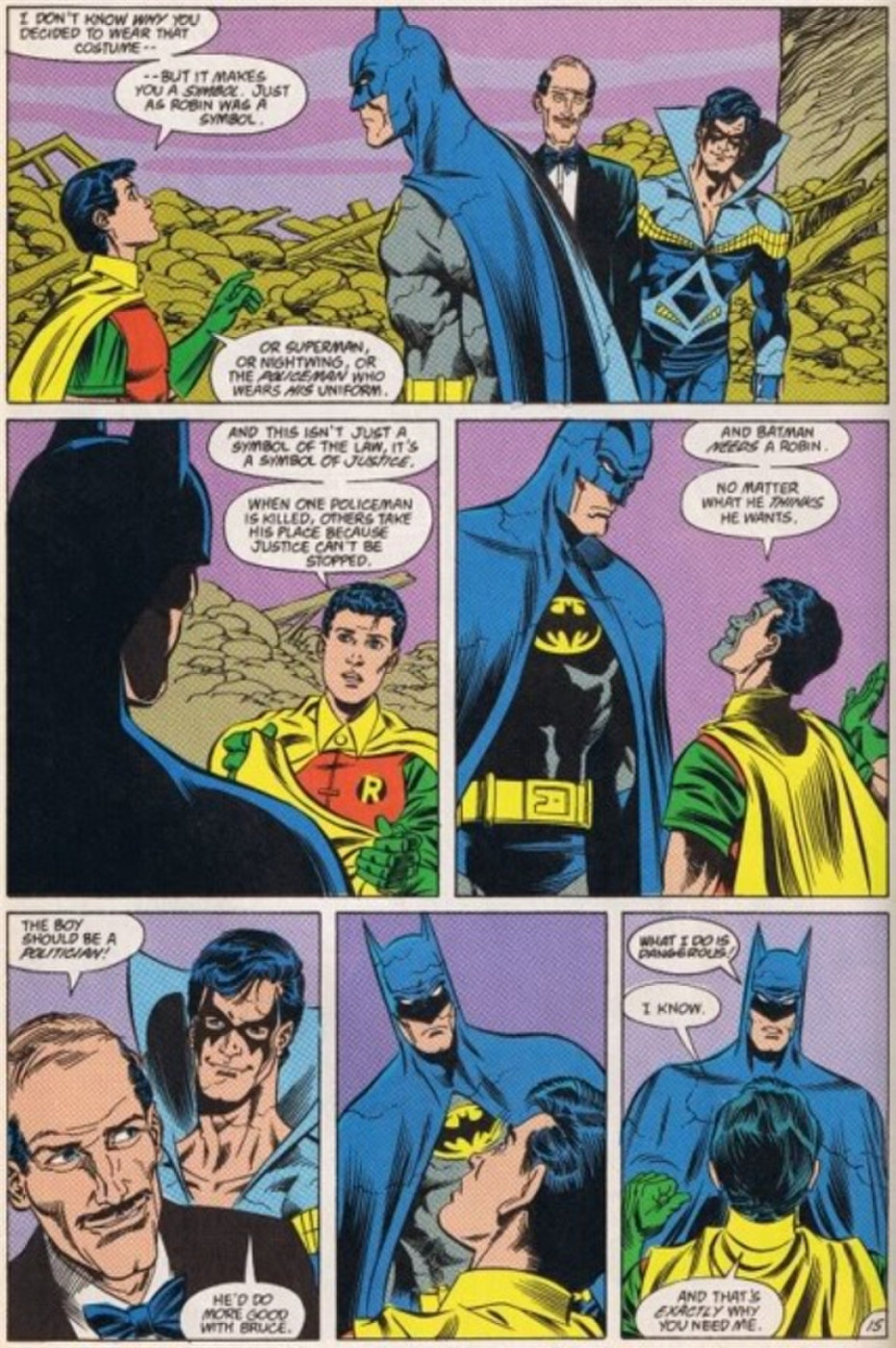An oral history of Tim Drake AKA Robin, with O'Neil, Wolfman, Nicieza, Yost, and more
Tim Drake has grown a lot - read about how he started!

DC's Tim Drake (AKA Batman's third Robin) is still evolving as a character, more than 30 years after his debut.
Tim's continued growth was most recently exemplified in the pages of August 10's Batman: Urban Legends #6, as he comes to a deeply personal realization about himself, and is a testament to the strength of the character who was created in the wake of Batman fans killing his predecessor as Robin via a phone poll.
A few years back Newsarama spoke to many of the writers and editors responsible for Tim's creation, his early breakout popularity, and his enduring presence in the DCU including the late Denny O'Neil, and writers Marv Wolfman, Chris Yost, Fabian Nicieza, and Brad Meltzer.
What follows is that oral history of Tim Drake.
In 1989's Batman #436, a new DC character named Tim Drake was introduced, completely turning the tide on the feelings of Batman fans — making a fan base who had previously wanted DC's new Robin to be killed feel like they had hope for a beloved new sidekick for Batman.

Tim Drake was introduced at a time when the idea of a new Robin was far from being popular. In the '80s, original Robin Dick Grayson had evolved to an adult role (as Nightwing), and his replacement Robin (Jason Todd) was so unpopular that readers voted to have him killed. Using a '900' number, readers were able to choose whether the Robin lived or died after an attack by the Joker — and the majority wanted him dead.
Not so with Tim Drake, who was introduced surprisingly soon after Jason's death. Not only did the character become an accepted part of the Batman universe when he was introduced, but he's stuck around as a key DC character to the present day. Today, the character is one of a handful of characters introduced during the Modern Age who are still consistently active in comic books and are still popular with comic fans.
Get the best comic news, insights, opinions, analysis and more!
So how did a character who replaced a hated Robin become such a beloved one?
Newsarama gathered quotes from creators who were instrumental in the creation of Tim Drake, and a few who helped form his character in more recent years, to explore the reasons behind the character's perseverance to become so important to DC. What follows is an oral history of the creation of the character Tim Drake, told through the words of the creators behind him.
Marv Wolfman, the writer who created Tim Drake as Robin in the pages of Batman: Nothing was wrong with Jason except that the fans didn't take to him … He was a fine character, but during that time period in comics, the idea of a snotty, possibly criminal Robin could not be accepted. But look at Damian today.
I had nothing to do with Jason so I could come in and create a Robin the readers of the time would like as a person.

Denny O'Neil, the Batman editor at the time of Tim Drake's introduction: After we bumped off Jason, I thought eventually, we'd need a new Robin, but I thought we'd give it a year … But word came down from on high - I mean, higher than Jeanette [Kahn, then DC president] - no, we need a new Robin right away.
Marv Wolfman: Simply, with the end of Jason Todd, I was asked what I'd do to create a new Robin. … I was asked to come up with a new Robin and to present my ideas. They liked what I came up with.

Fabian Nicieza, writer of Tim's Red Robin series: Tim seemed specifically developed to counter the difficult creative position DC had been put in after what had happened with the 'marketing death' of Jason Todd. … I imagine half the audience was happy with Jason's death and half weren't, so whatever you did with the next character to assume the mantle of Robin had to be smartly designed enough to keep your divided audience satisfied.
Marv Wolfman: My thoughts were that this Robin should want to be Robin and not Batman. … That he have parents, to differentiate him from all other kid partners, and that he not only be a good athlete but incredibly bright and intuitive.
To accomplish some of that, I had him at the circus, as a very young child, when [original Robin] Dick Grayson's parents were killed; I thought that would be something he'd never forget and would cement the memory of Dick's performance in his mind. The rest followed out of that. … Tim was smart enough to figure out Dick Grayson was Robin and therefore who Batman was. He did what adults couldn’t.
The readers had to understand that this was someone worthy of being Robin. Also, because his parents and family were all still alive, that he was not fueled by rage or revenge. He was doing what he did because it was right. … I worked to make him a character readers could understand and sympathize with. He was no a victim; he was doing what was right.
Fabian Nicieza: I think that's a pretty hard foundation for fans not to embrace. … They might not like his personality or the role of Robin in general, but you can't deny that it was hard not to respect Tim Drake.
Marv Wolfman: He's good, bright, and though he figured out who Robin really was, he never said anything, and that meant he was honest.
Denny O'Neil: We waited several months before we actually had Tim in danger … At first, he was the guy who did reconnaissance from across the street.

Fabian Nicieza: By developing the character slowly, making it obvious he would eventually become Robin, but not putting him into costume too quickly, fans got a chance to see the character's foundation … As a reader and rookie writer at the time, I remember thinking that Denny O'Neil's writing group was doing an excellent job of defining Tim's strong moral underpinning, and most importantly I think, the fact that he never became Robin for selfish reasons, he did it because he knew Batman needed it, and he knew how important Batman was.
Marv Wolfman: Batman seemed to be acting tougher since Jason’s death. I used that to make Batman understand he needed to have someone to rein him in. Someone to care for and to remember he’s Batman to help others.
Without Tim, without someone to keep him on track, there’s no telling how violent he may have gone. … Tim didn’t become Robin to avenge his parent’s deaths; he became Robin because he realized Batman would go over the top and needed help. He became Robin to do good.
Denny O'Neil: This is not real life. This is fantasy melodrama, so eventually, the stories put him in danger. But we didn't want to be callous about it. And we wanted to establish that this child was more than just a kid that Batman decided to put in danger. Tim Drake was an asset.
[Putting another child in danger] was something they didn't think about in the early days, when they made the first Robin character … But we had to think about that, because of the realism we were using at the time in the industry. It was a different time … I even hired somebody to design a costume that would afford maximum protection, thinking it might be acceptable to put a child in harm's way if he was well protected. We used almost none of that design, but we did think about those things at the time.

Tim Drake design proposal by Norm Breyfogle



Marv Wolfman: That he had a family and a background that fleshed him out before he became Robin helped. And that his ties were directly with Dick Grayson - being there for the death of his parents - gave him a heritage.

Chris Yost, who launched Tim's Red Robin title in 2009: Tim Drake carried several Robin mini-series and his own title for well over 100 issues.
Fabian Nicieza: I think new readers were taken by Chuck Dixon's take on the character [during his long run on the Robin title during Tim's early years], which very smartly combined aspects of 'the making of a hero' arc with 'teen angst' that wasn't too dour, but gave Tim conflict in a fun way.
Chris Yost: Tim was in a horrible place when I got to him [in 2009], having lost pretty much everyone he loved. Mom, Dad, Conner, Bart, Bruce... it was a rough patch.
Brad Meltzer, the best-selling novelist and comic book writer who was given the task of putting Tim Drake through his father's death in the limited series Identity Crisis: Full credit to [then executive editor] Dan DiDio, who knew that Tim's dad was about to be killed elsewhere, and said to me that if I could make it work with the plot, I could do it. … And since Identity Crisis was about death in all forms - from death of family, to death of self - it worked perfectly for what we wanted. Plus, it was the kind of death that mattered - one that would impact the character forever.
Christopher Yost: Robin was always supposed to be the light in Batman's world. … So honestly, I really wanted to bring the light back, to see Tim through the tunnel to the light at the end, and making sure it wasn't a train.
I like that he can operate like Batman, be the detective, crack skulls, and still have a life. Still smile. He can be serious like Bruce, and enjoy it like Dick.… I have to believe that since Tim was in serious contention as someone who could take over for Bruce, seeing him evolve from Robin [to Red Robin] was inevitable.

Fabian Nicieza: I think he considered himself the spinal column of the Bat-family. … His arrival brought Bruce back into the light, brought Dick back into the fold, and in many ways, that status as a thematic lynchpin continues to this day, even now that he's on his own a lot more.
Chris Yost: He's embraced Batman's world, been put through hell, and come out the other side emotionally OK, in ways that Batman still isn't. He's still human in a way that Batman really kind of isn't. … I hope he'll never be Batman.
Brad Meltzer: I think the strength of Tim Drake has been the strength of the many writers and artists who treated him as Tim instead of just as Robin. … We all knew what Robin did. We now know what Tim would do as well. No small task.
Chris Yost: I think, given everything that's been done to him, he's exceeded all expectations.
Tim Drake is highly-ranked on Newsarama's list of Batman's best Robins.
Vaneta has been a freelance writer for Newsarama for over 17 years, covering Marvel and DC, and everything in between. She also works in marketing.


